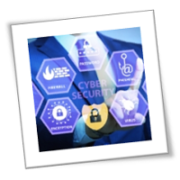Ransomware: Don’t Become a Small Business Cybercrime Victim
Be on guard against ransomware. Small businesses can fall victim to cybercrime even though many owners don’t think they are likely targets.
A little legal practice, a 35-person manufacturing firm, and a two-person charitable organization are all examples of technology-driven businesses. As much as any brand-name financial institution or international shop, their core operations depend on operating systems, software applications, and networks. And they have all been victims of ransomware.
However, small and medium-sized businesses (SMEs) may be severely harmed, unlike large corporations, which are more likely to withstand a high-profile cyberattack.
A problem? Yes, but perhaps not as big as you think.
SMEs pay a high price for business disruption. They pay a high price for remediation and data recovery. They may lack the expertise and workforce to secure their essential IT infrastructure from cybercrime.
Enormous Ransoms for Small Businesses
According to NetDiligence’s Cyber Claims Study 2021 Report, ransomware has accounted for 40% of overall incident expenses connected to cyber claims in the last five years.
That is to say, the average ransom demand in 2020 was $247,000.
Research has estimated the cost of recovering from a cybersecurity breach affecting a small business to be roughly $352,000. These expenses do not account for the loss of client confidence due to the misuse of sensitive data.
Criminals know that small firms have weak or non-existent cybersecurity systems. As a result, they target them in large numbers, sending out repeated phishing attempts in the hopes of capturing a few victims in their automated nets.
Google has sent out 50,000 phishing or malware attack alerts as of October 2021, up 33% over the same month in 2020.
Since the Covid-19 epidemic, work-from-home and work-from-anywhere technologies have become more popular, exposing workers and small company systems to cyberattacks. According to one survey, approximately 70% of full-time workers in the United States started working from home during the Covid-19 epidemic.
Unfortunately, some small businesses infrequently take efforts to secure their remote employees. These efforts include implementing two-factor authentication (an additional login step) or encrypting computer disks. During the epidemic, millions of people lost their employment. Have they lost access to all of their email accounts and logins? Probably not.
Vulnerabilities in Small Businesses and Cybersecurity
Why are tiny firms such prey to predators? They could not have the operational know-how or staff to appropriately defend their IT systems and networks.
Meanwhile, here are a few examples of circumstances that put small companies at risk:
- IT infrastructures are often outdated, are not regularly updated, and are poorly constructed.
- The person in charge of IT — whether the CFO, the CEO, or a random employee — is seldom updated on the newest security risks and solutions.
- Given the average pay of roughly $165,000, hiring a chief information security officer is often unaffordable.
- A jumble of local hardware, networks, devices, and apps may make cyber protection difficult.
- Employee cyber awareness training is poor or non-existent.
- Backups may be unreliable or have not been thoroughly tested.
- Business continuity and disaster recovery planning have not been emphasized.
Company executives may mistakenly believe that they are too tiny to be a cybercrime target, to their detriment.
Getting a Head Start On a Tough Situation
You don’t need any new gear or antivirus software to start boosting your company’s cyber security image.
Begin by taking a detailed inventory of your physical and digital assets, as well as a vulnerability assessment. It’s critical to create a “data governance” document that establishes guidelines for data management. People still record passwords on Post-it Notes on computer displays or taped on the bottom of mouse pads in small workplaces. Thus this technique is essential.
Above all, cybersecurity awareness training for employees is also necessary.
Phishing or other efforts at social engineering or getting individuals into vulnerable networks are a vital security threat vector for the ransomware outbreak. According to IBM’s 2021 X-Force Threat Intelligence Index, phishing was responsible for one-third of all cyberattacks. Ascertain that your personnel knows what to look for in these circumstances.
For example, penetration testing is another technique to go ahead with.
“Pen testing” ensures that your security measures are effective. Therefore, few small firms, in all experience, have the competence to undertake penetration testing. Therefore you may wish to hire an expert.
Finally, some experts recommend that every company establish real-time network and server monitoring. While strong passwords, two-factor authentication, encrypted data, and network firewalls are necessary and will slow down attackers, complete protection is neither cost-effective nor practicable.
Taking efforts to mitigate the potentially catastrophic effects of a cyberattack may be well worth the expense for small companies.
Are you interested in learning more about cybersecurity? Call us today and discover how our wide array of tech services can safeguard your business.
If you are looking for an expert to help you find the best solutions for your business talk to GCInfotech about a free technology assessment
Published with consideration from smallbusinesstechnology.com SOURCE












